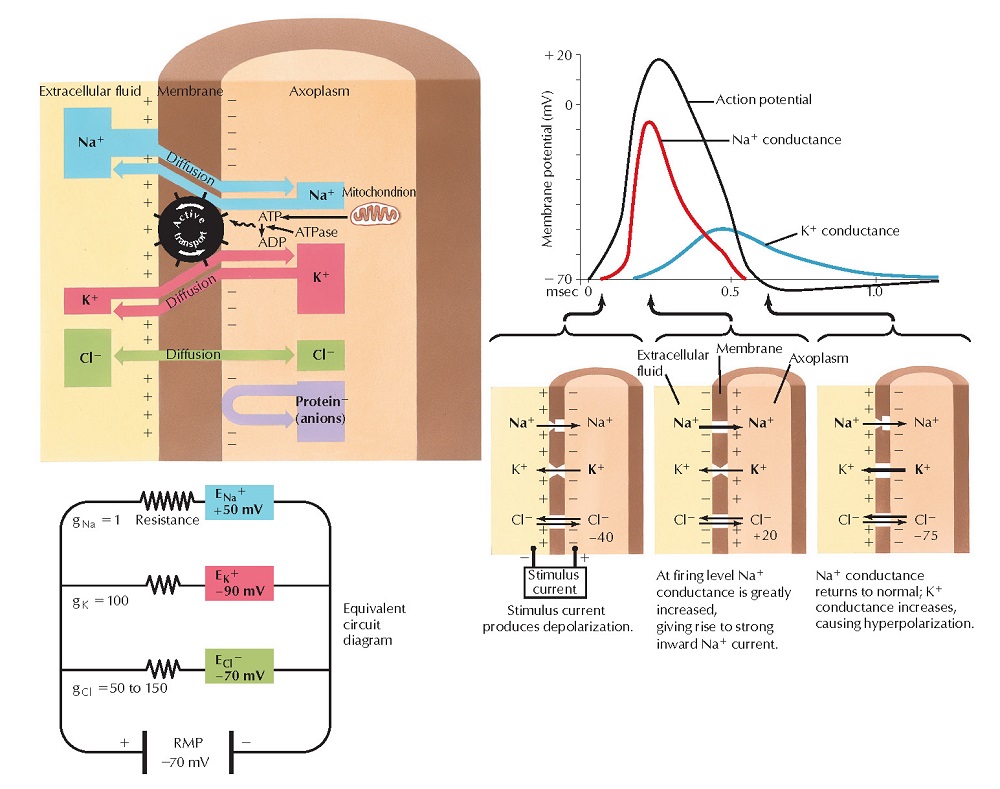Resting Membrane and Action Potentials
The CNS comprises many types of neurons. In general, myelinated neurons conduct impulses more rapidly than do nonmyelinated neurons. The magnitude of the electrical potential difference across the neuronal membrane in the resting state, termed the resting membrane potential, depends on the relative intracellular and extracellular concentrations of Na+ and Cl− (higher on the outside) and K+ (higher on the inside). The cytoplasmic electrical potential is more negative than the extracellular fluid by approximately −70 mV. The potential difference is partly maintained by an Na+/K+ active transport exchange mechanism (ion pump).
If
the membrane is depolarized from its resting potential to approximately −40 mV
(threshold potential), an action potential develops: the membrane potential
continues to increase to approximately +20 to +30 mV and then returns to its
resting level, in approximately one thousandth of a second. The frequency of a
neuron’s firing is one mechanism by which information is encoded within the CNS.





